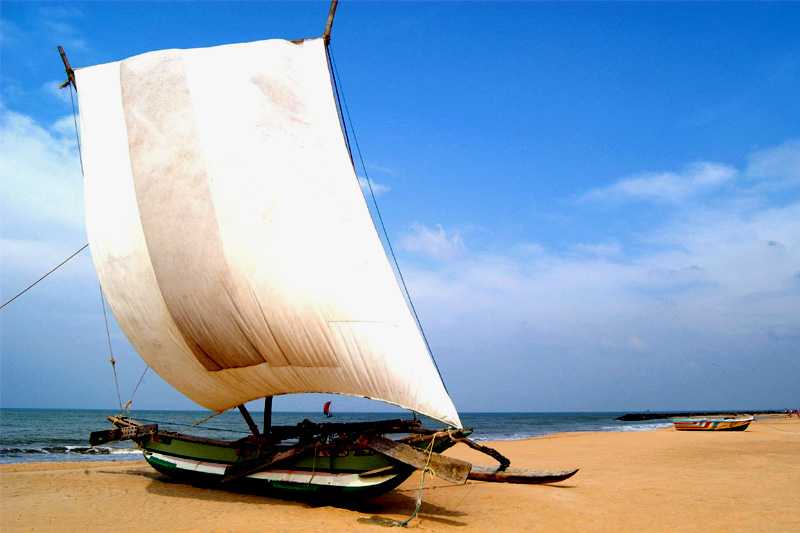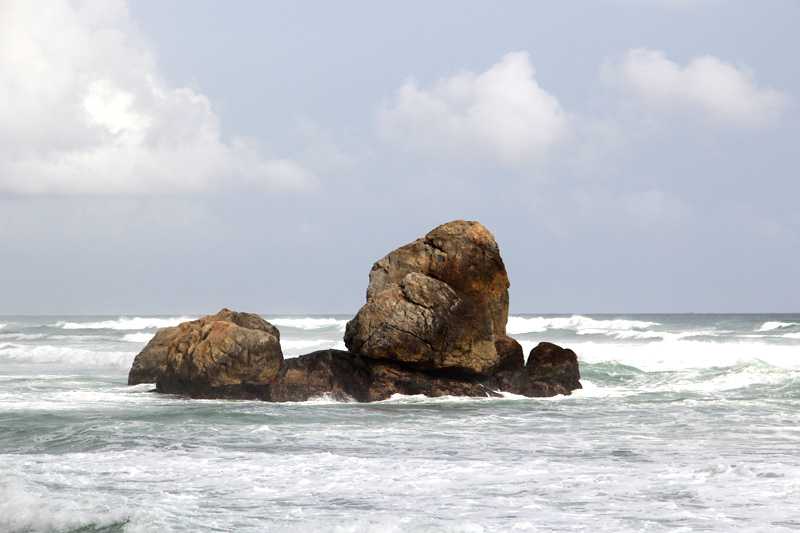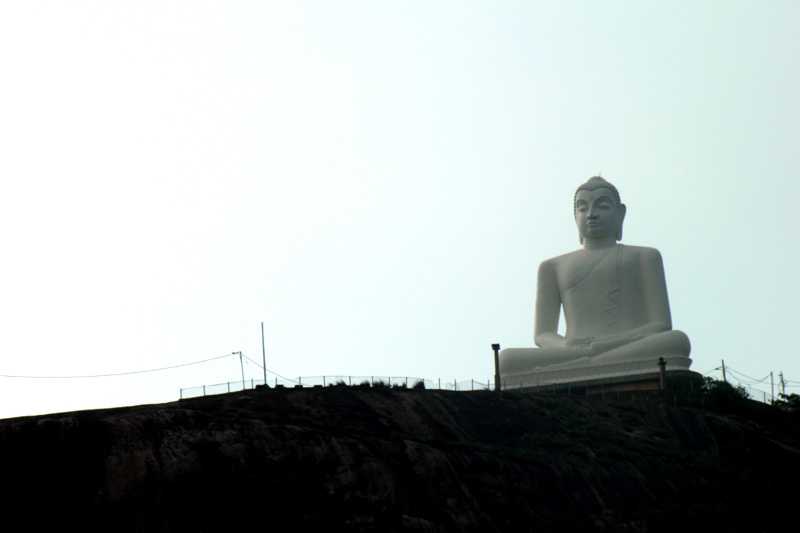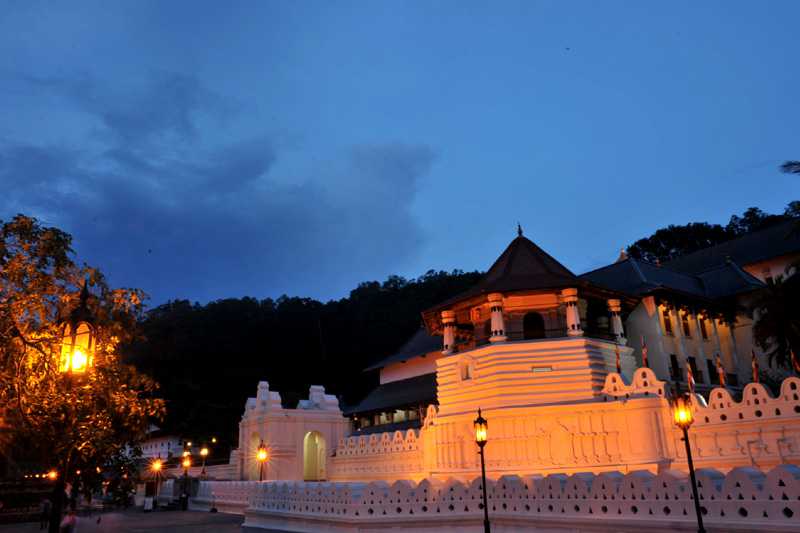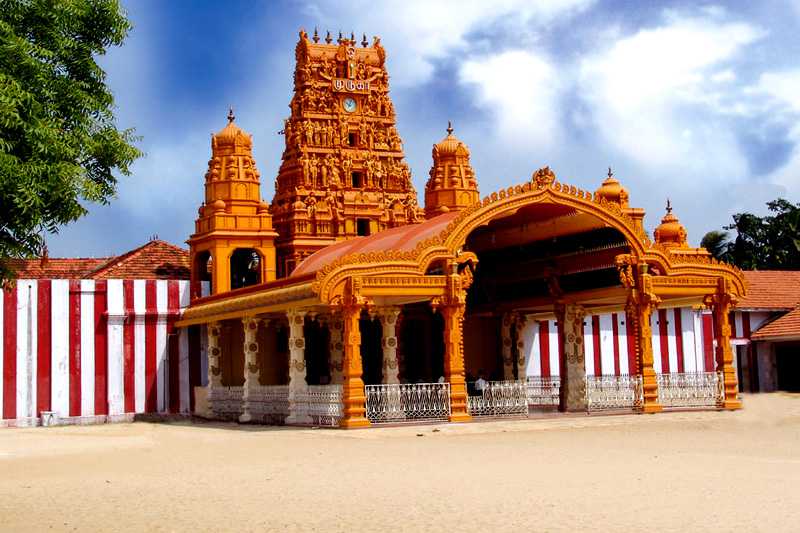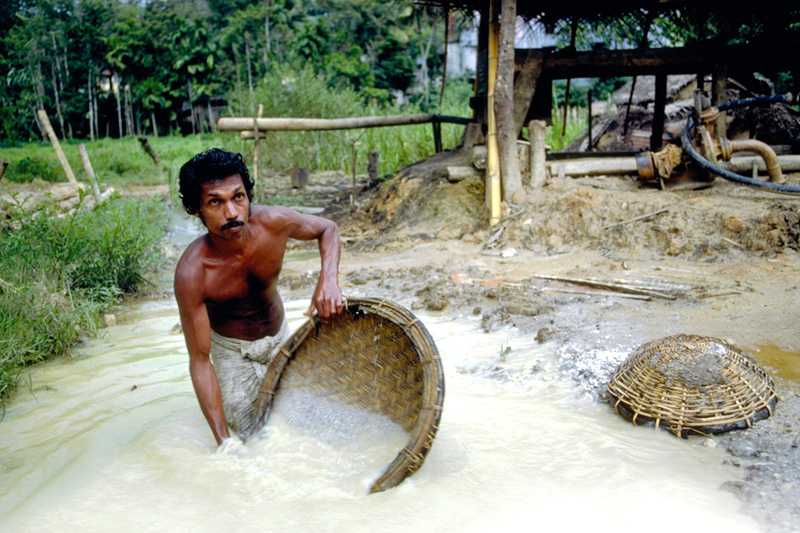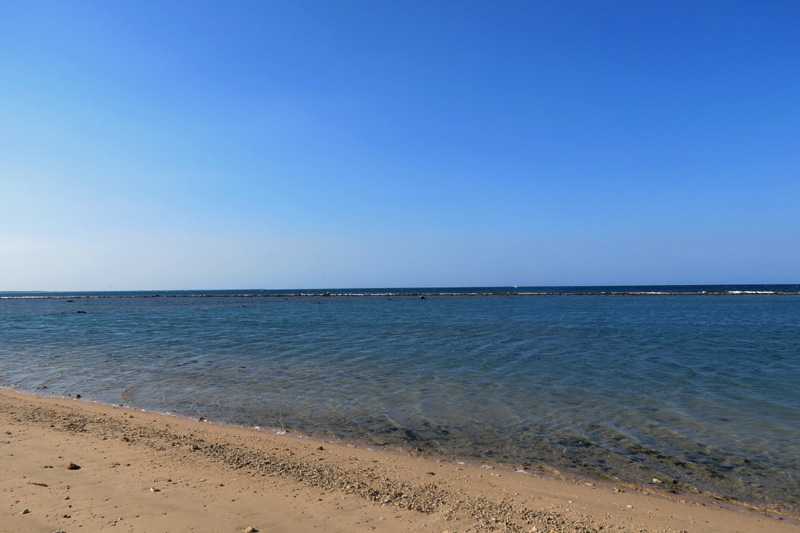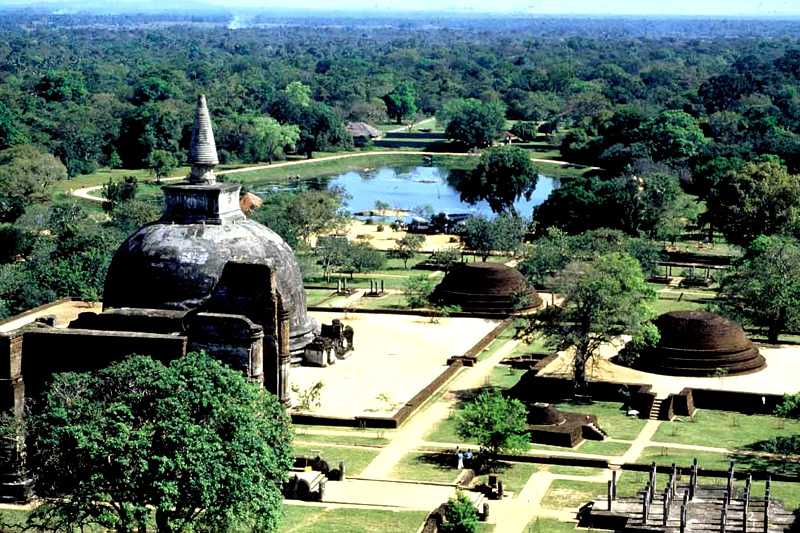Sigiriya City
Yet another UNESCO world heritage site in Sri Lanka, Sigiriya is a wonderful ancient palace built atop a 660 feet tall rock column. Located about 170 km northeast of Colombo and 56 km west of Polonnaruwa, this wonderful rock castle is a creation of King Kassapa (AD 477-495). Sigiriya is one of the most attracted historical sites in Sri Lanka and it is most famous for its stunning frescoes.
The site has the leftovers of an upper palace sited on the flat top of the rock, a mid-level terrace that includes the Lion Gate and the mirror wall with its frescoes, the lower palace that clings to the slopes below the rock, and the moats, walls, and gardens that extend for some hundreds of metres out from the base of the rock. The site is both a palace and a fortress. The upper palace on the top of the rock includes cisterns cut into the rock that still retain water. The moats and walls that surround the lower palace are still exquisitely beautiful.
Sigiriya is considered one of the most important urban planning sites of the first millennium, and the site plan is considered very elaborate and imaginative. On the west side of the rock lies a park for the royals, laid out on a proportioned plan; the park contains water-retaining structures, including sophisticated surface-subsurface hydraulic systems, some of which are working even today. The south contains a man-made reservoir; these were extensively used from the previous capital of the dry zone of Sri Lanka. Five gates were placed at entrances. The mirror wall is well preserved.
People of all types wrote on the wall, on varying subjects such as love, irony, and experiences of all sorts.
Royal Gardens
The most important aspects of Sigiriya are the gardens and it is among the oldest landscaped gardens in the world. The gardens are divided into three distinct but linked forms: water gardens, cave and boulder gardens, and terraced gardens.
The water gardens are seen in the central section of the western gardens. Three principal gardens are found here. The first garden consists of a plot encircled by water. It is connected to the main zone using four ramps, with gateways placed at the head of each causeway. This garden is built according to an ancient garden form and is one of the oldest surviving models of this form.
The second contains two long, deep pools set on either side of the path. Two shallow, winding streams lead to these pools. Fountains made of circular limestone plates are placed here. Underground water conduits supply water to these fountains which still functions, especially during the rainy season. Two large islands are located on either side of the second water garden. Summer palaces are built on the flattened surfaces of these islands. The third garden is sited on a higher level than the other two with a large octagonal pool on a raised pedestal on its northeast corner. The large brick and stone wall of the citadel is on the eastern edge of this garden.
The water gardens are built on the east-west axis. They are connected with the outer moat on the west and the large artificial lake to the south of the rock. A miniature water garden is located to the west of the first water garden, consisting of several small pools and watercourses. The recently discovered smaller garden appears to have been built after the occupation of King Kassapa, possibly between the 10th and 13th centuries. This proves that Sigiriya was occupied by many from pre history and even after King Kassapa.
The boulder gardens consist of several large boulders linked by winding pathways. The gardens extend from the northern slopes to the southern slopes of the hills at the foot of Sigiriya rock. The audience hall of the king was positioned in the boulder garden, the remains of which are seen on the flattened and polished summit of a large boulder. A large archway, created by two boulders, provides access to the terraced gardens.
The terraced gardens are formed from the natural hill at the base of the Sigiriya rock. A series of terraces rises from the pathways of the boulder garden to the staircases on the rock. These have been created by the construction of brick walls, and are located in a roughly concentric plan around the rock. The path through the terraced gardens is formed by a limestone staircase.
Frescoes
The 5th century frescoes are the most famous feature of Sigiriya. These stunning frescoes that are believed to represent either apsaras (celestial nymphs) or concubines of King Kassapa, are painted on the sheer rock face that appears to be a gigantic picture gallery. The paintings would have been spread all over the western face of the rock and the graffiti refer to 500 ladies, but unfortunately most of them have faded away and only few paintings can be seen today. These paintings appear to be unique because such a painting style cannot be seen elsewhere. Lines have been painted in a form that enhances the sense of volume of the figures and paint has been applied in sweeping strokes using more pressure on one side giving the effect of a deeper colour tone towards the edge.
Mirror Wall and Graffiti
Mirror Wall is a 3-metre-high brick wall with a mirror-like highly polished plaster. This wall was meant for those who come to see the frescoes to note their impressions of the women in the gallery above. The mirror wall contains a number of about 1000-year old graffiti that show evolution of the Sinhala language. People of all walks of life have written thousands of verses on the wall on varying subjects such as love, irony, and experiences of all sorts. One has written: "I am Budal, came with hundreds of people to see Sigiriya. Since all of them wrote, I did not."He has left an important record that Sigiriya was visited by people beginning a very long time ago.
Sigiriya Museum
The Sigiriya Museum is a fine place to look into the results of 3-decade archaeological research on Sigiriya heritage site. Upon entering the Sigiriya Museum one has to go through a brick tunnel that is designed similarly to the archway of the Sigiriya Fortress. Inside are exhibits of various artifacts found from archaeological excavations such as a human skeleton, tools, jewels, sculptures and much more. The galleries are also filled with drawings, photographs and information to visitors so that the assistance of a guide is not required. The iron melting Kiln and the purple tone embedded gold earring are among the most significant artifacts of the museum.
The first section of the Museum showcases the prehistoric Sigiriya explaining how humans occupied Sigiriya and the surrounding area from about 10,000 years ago. Next would be the Protohistoric transition where humans moved from itinerant food gathering and hunting to agrarian village settlement. Then the early Buddhist monastic periods are featured followed by the pre-Kassapa period. Finally the third gallery is solely dedicated to King Kassapa which is the 'Golden Age' of Sigiriya.
Lion's Paws
The colossal lion's paws are a fine attraction at the ancient Sigiriya fortress. The lion's paws built of bricks lie either side of the entrance gate which runs through the lion's mouth on a flight of steps. These fifth century lion's paws were found during excavations in 1898.
Summit of the Rock
The top of the Sigiriya Rock is a terraced elliptical plateau 200 metres above the surrounding plain. About 1500 years ago, the summit was home to the fortified palatial complex of King Kassapa, but what we can see today is remains of foundations of those palaces, cisterns, gardens and of a large pond used for water storage. Ruins of a dagoba are also visible while a smoothly polished stone slab believed to be the king's throne lies close to the ruined dagoba.







